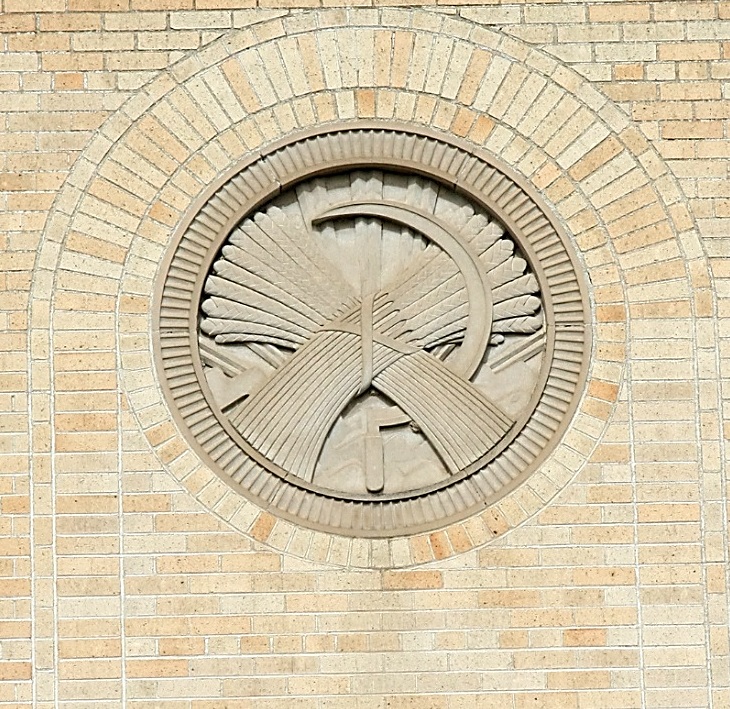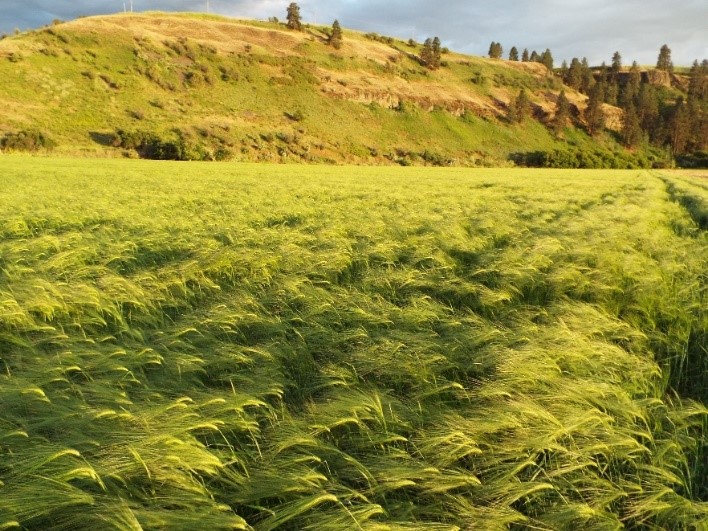On numerous occasions in recent months I’ve been reminded how by the names of notable humanitarian groups like Second Harvest and Food for the Hungry that “gleaning” remains a highly relevant endeavor for our time. Although often associated with bygone days, gleaning has never been more relevant in this day when so much food goes to waste while hunger still stalks substantial numbers of the population. Hats off to the many dedicated workers in these organizations who devote themselves to collecting excess produce, and to farmers across the country who partner with these groups to provide these valuable commodities.
2nd Harvest Delivery Truck Trailer Mural (2018); Pasco, Washington
Universal themes of deliverance from want through rural toil and fellowship have been variously represented throughout history through images of reaping and gleaning in art and literature. The Bible and ancient writings by Homer and Virgil include numerous references to sickle and sheaf, which are also graphically depicted in Egyptian tomb paintings and Near Eastern mosaics. Representations of them continued to appear in stirring, numinous form for the next two millennia. Leonardo da Vinci’s The Valley of the Arno (1473), which shows distant Florentine fields from a mountain slope vantage, is considered the first landscape done for nature’s sake, though evidence of humanity’s presence is limited in Leonardo’s drawing to distant stone ramparts and partitioned fields.
But development of landscape as an artistic and literary theme was slow to develop in Europe and only in the mid-1500s do graphic works by Titian, Domenico Campagnola, and other Italian masters appear as idealistic countrysides with human figures to enliven such subjects. Images of scythe-wielding harvesters first appear in Late Roman Era sculpture and wall decoration, and as illustrations for religious works in the Early Middle Ages.
Lodewijk Toeput, Summer Harvest (c. 1590), National Archives
Sixteenth century Flemish painters and printmakers Pieter Brueghel the Elder and Lodewijk Toeput were among the first artists to depict harvest scenes. Such masterpieces as Brueghel’s celebrated The Harvesters (1565) significantly contributed to the validity of agrarian landscape as a prominent theme for painting and drawing. Farmer-poet Thomas Tusser, Brueghel’s English contemporary, composed A Hundreth Good Pointes of Good Husbandrie, first printed in London in 1557, to express the country year in rhyming couplets for a long poem that contributed to agrarian literature as an accepted genre. In every country, as with most every artist and author, the function of art as expression of meaning and beauty is different and changes in manifold ways over time.


























